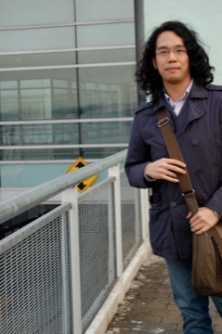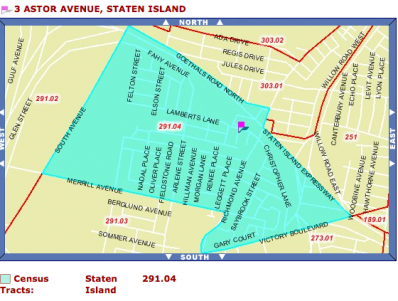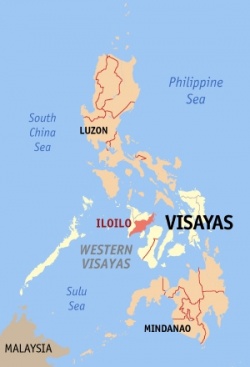From The Peopling of New York City
Andrew Garcia
Contents |
About Me
My name is Andrew Garcia. I was born in Staten Island, New York, where I still live. I am a student of the Macaulay Honors College: I attend the City College of New York, where I major in biology. For Spring 2009, I am a visiting student at Baruch College. Before CCNY, I previously attended St. Sylvester School and Moore Catholic High School.
I am the youngest son of immigrant parents from the Philippines, arriving in North America in the mid 1970s. My mother entered the United States directly, but my father first settled in Canada (and became a Canadian citizen) before coming to New York. As a result, I have birthright United States citizenship, am eligible for Filipino citizenship, and will become a Canadian citizen by April.
An observation about Filipinos regards their adaptability to other cultures – sometimes at the cost of Filipino identity. I do not strictly identify with my rogues' gallery of national personifications: Uncle Sam, Johnny Canuck, or Juan de la Cruz. Having lived in the US, been raised in a Filipino home, and traveled to Canada (among other places), I am unsure that I can ever be a dyed-in-the-wool citizen or national.
As a biology major, I will either practice medicine or perform research in genetics and evolution – possibly both if I am admitted into a MD/PhD program in the future.
Outside of biology, I have various interests. Of these, I enjoy travel and photography best.If given the opportunity, I would like to "eat my way around the world" and experience foreign cultures like Anthony Bourdain. On a less hedonistic note, I recently adopted photography as a hobby. I have yet to truly trek and shoot due to my studies and trigger-shyness. Despite the constraints, I tend to view (then poorly emulate) photos of food and cities.
Ideal Community
Since biology is my primary interest, the ecological definition comes to mind when I encounter the word "community" – an ecosystem's collective of organisms, with a focus on the interactions among them. But how would I describe an ideal human community?
Immigration Film Clip
Considering depictions of immigration, I thought of the 2004 film Maria Full of Grace. A poignant aspect of the film is its depiction of push factors that influence migration from a native country. In this film, lack of money and unpleasant plantation conditions partly influence the female protagonist to leave Colombia. The result is the character's participation in drug trafficking: in order to enter the United States, she becomes a cartel's drug mule.
I had also thought of another film, Sofia Coppola's Lost in Translation, which was released in 2003. Rather than depicting immigration to New York or the United States, the film instead focuses on two American transients in Tokyo, Japan. Despite this, the film effectively captures a "fish out of water" atmosphere --- disorientation stemming from the characters' placement into a setting that features an alien culture and an unfamiliar language.
Neighborhood Census Tract
I live in the Bulls Head neighborhood of Staten Island. Only fairly recently have I called this area home – I moved here in February 2007, well after the 2000 census. As a result, I don't have the most detailed impression of my community. I previously lived in neighboring Graniteville, separated only by a portion of the Staten Island Expressway; in fact, the two are on opposite sides of the expressway.
Populated by 6,939 residents, most of the area's demographics did not surprise. Under all racial measures, at least 70% of residents declared themselves white – presumably with Italian as the most prevalent sub-group. After whites, Hispanics and Asians were the most significant groups in the area. Proportionally, the relative amount of area Hispanics matched the borough's (at 12.1%), which were both lower than the city's overall fraction. Also, a higher proportion of Asians were measured compared to city and national figures (5.6% and 9.7%, respectively). In contrast, blacks and African-Americans are under-represented in the area when compared to borough and city figures.
Bulls Head is a decidedly middle-class neighborhood. Just over half of the population are in their prime working years, if one uses the 25-55 years old metric. Both median family income (US$63,479) and median household income (US$72,048) were higher than city and national figures. The population also appears to be well-entrenched in United States custom – 17.3% of residents were foreign-born while only 29.1% of residents "don't speak English very well." Finally, I was interested in the education profile – from tract to city, I thought that a quarter of the population graduating college was quite low.
Although I have lived in Bulls Head for only two years, most of the census data fits my youth experience in the area. A part of Richmond Avenue passes through Bulls Head. For many Staten Islanders, Richmond Avenue is a thoroughfare – studded with other consumer retail – that leads to the Staten Island Mall. A favored lens is an area's business establishment, as they must acquire local patronage.
Not surprisingly, this middle-class neighborhood contains Middle American signatures such as strip malls dominated by chain stores. For a more focused view, I looked at Bulls Head eateries and food stores. Fitting the middle-class profile, chain businesses are prominent. The major supermarket is King Kullen, a chain in Long Island and Staten Island. Fast-food mainstays such as McDonald's and Domino's have a location within the area; Dunkin Donuts has two.
From There to Here
At home, my family’s background is a recurring topic in casual conversation. I am intensely curious about the subject; as a result, I ask parents about life in the Philippines and adjustment to the United States. I hope that their answers inform two areas – immigrant life and trans-nationalism: more specifically, learning about family history and developing links among different nations.
I am a first generation American currently living in Staten Island, a borough of New York City – the destination of my parents’ movements as part of the post-1965 New Immigration. Simplified, my family’s story would fit the Filipino immigrant template. As described by Joseph Berger in the 2005 book The World in a City, an educated professional (usually a nurse) leaves grinding poverty to attain prosperity in a foreign land – my parents’ immigration span three countries over two continents.
Background and Movement
Due to common geography and culture, my parents share a common background. Both born in 1952, they come from the Philippines, an archipelago nation of 7,000-plus islands in Southeast Asia. Most Filipinos speak Tagalog and are from areas within the northern island region Luzon. My parents speak Ilonggo, – the language of Iloilo province, which is located in the central island region known as the Visayas.
Grace Garcia (née Drilon) comes from a small village in Dumangas, a rural municipality. She is a graduate of the nursing program at the Central Philippine University, where she also met my father. Along with the 1965 dissolution of US immigration quotas, she also cites the US nursing shortage that materialized coincidentally – she left the Philippines in 1976. She lived in Indianapolis, Indiana for a year before joining her brother in Woodside, Queens and securing a nursing position at a Manhattan hospital (where she has a twenty-plus year tenure). By the 1990s, she obtained US citizenship.
Fritz, my father, comes from the Jaro district of Iloilo City, the provincial capital. By 1975, he attained an engineering degree from Central Philippine University. Along with marketable skills, he cited familial pressures to immigrate. His father had previously visited the US and was impressed. His sisters (who were nurses) left for Canada and lived in Montreal, Quebec. His fiancée was already in the US and maintained regular correspondence. Additionally, he cites the turbulent Filipino society – the country had declined from a post-war regional power (well-regarded just behind Japan) to a sluggish economy and autocratic government under President Ferdinand Marcos. In 1978, he followed his sisters to Canada.
Rather than join family in French Canada’s central city, he resided with several friends in Canada’s largest metropolis: Toronto, Ontario. Until 1982, he lived in the district of Scarborough – an area occupied by a significant immigrant and foreign-born population. In just four years, he became a Canadian citizen. However, he joined my mother in Queens once he obtained a green card as a resident alien; from Woodside, they then moved along Roosevelt Avenue to Elmhurst.
My parents married and had their first child in 1982. Due to the strain of raising children, they saved money and planned on moving to a larger space outside of the city. Staten Island’s relative greenery and quiet appealed – in 1986, they moved to a house in Graniteville, a Mid-Island neighborhood. I was born in 1990
Cultural Ties
I experience cognitive dissonance with my national and cultural links – do I separate or connect my associations to the US, Canada, and the Philippines?
Berger observes a phenomenon common among immigrant groups: maintaining heritage culture while also assimilating into US culture, a development enabled by advances in telecommunications. Examples include international television broadcasts and Internet video conferencing. At over 11 million people across various nations, the Filipino diaspora (also called Overseas Filipino Workers, or OFWs) are significant users.
My parents both achieved prosperity and US citizenship – they are generally quick to espouse the "American Dream." Since adolescence, however, they have sought to rekindle a connection to “the old home.” For one, our household subscribes to a package of Filipino channels – they enjoy Filipino news and entertainment almost nightly. Family ties also vivify the cultural connection; occasionally, my parents transfer funds or ship practical goods [in balikbayan boxes] to relatives.



